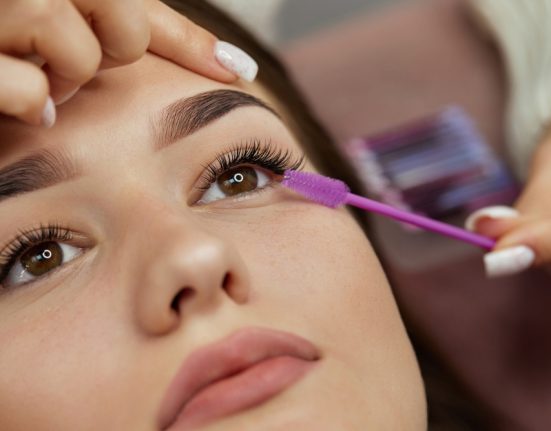Modeling can be a fun, engaging, and rewarding experience for your child. But before you begin the process of submitting your child’s measurements and photos to modeling agencies, it’s important to know what to expect. Keep reading to learn about the different types of child modeling, what kinds of photos to submit to agencies, and how much child models make per job.
What kinds of child modeling are there?
The main types of child modeling are:
- Commercial print modeling: Modeling for magazines, catalogs, and other forms of print media
- TV modeling: Starring in or being in the background of TV commercials and social media video ads
- Editorial modeling: Modeling for artistic, high-fashion photo shoots
Height and age are the most important factors. “Clothing and editorial modeling jobs get booked based on your child’s height, for the most part,” explains Patti Fleischer, president and founder of Generation Model Management. Alternatively, “commercial print modeling jobs are based on a child’s age.”
How to know if modeling is right for your child
Your child’s success in the industry is contingent on having the right temperament. Babies should be relatively calm and easygoing, especially when they see unfamiliar voices and faces. Similarly, children of toddler age and beyond should be cooperative, polite, and comfortable interacting with strangers. “Modeling should only be fun for the child,” says Fleischer. “If a child is comfortable meeting new people and being in front of the camera with someone who is not their parent, and if they’re good at taking direction and engaging with people, they’ll love it.”
If your child doesn’t like to talk to strangers or wouldn’t take well to receiving instructions on set, modeling may not be a good fit.
How to get started in child modeling
The first step to getting your child started in modeling is to find a reputable child modeling agency. An agency will help connect your child to modeling jobs and serve as a liaison between talent and companies looking to book models for their campaigns. Finding an agency you can trust is paramount for you and your child’s safety and well-being. When searching for agencies, you should:
- Research the agency’s social media presence: Reputable agencies should have profiles across social media platforms. See if they actively post about their talent to gain a better sense of the agency and the kind of clients they work with.
- Read online reviews: Check aggregate review sites like Google, Facebook, and Yelp to read reviews from other parents. If you see mostly negative reviews, that’s a sign to avoid submitting your child’s information.
- Peruse press mentions and accolades: Have they been featured or quoted in any notable publications such as Child Model Magazine or Kid Model Magazine? Have they won any industry-related awards? If so, the agency is likely reputable.
- Look through forum threads: Search for agencies on our Child and Teen Models board to view existing threads about certain agencies or start new ones.
- Consider financial aspects: A reputable agency will never ask you for upfront payment. An agency should pay you/your child—not the other way around. Be wary of anyone who demands an upfront payment of any kind for submitting information or booking work.
Modeling schools are not always agencies, despite what they may claim in their marketing materials. While modeling and acting schools can help your child develop and sharpen their skills, representation without resorting to school enrollment is possible.
What kind of headshots does my child need?
Once you’ve found an agency or two that you’re interested in working with, it’s time to prepare headshots. It’s important to protect your child (and your wallet) from headshot scams. Common elements of these scams include asking for money in exchange for pictures, forcing you to use a specific photographer, and making exorbitant promises about salaries and success. Even if everything seems above board, never pay an agency up front—and be sure to get everything in writing.
Some agencies list what kinds of photos they require for submission (a headshot, a full-length photo, etc.). To ensure maximum reach, have the following photos on hand:
- A close-up of your child smiling
- A close-up of your child making a neutral or more serious expression
- A full-length body photo
- A three-fourths-length body photo
Good headshots for children should:
- Highlight your child’s unique look and personality: Joke around with your child before and during the shoot to help make their personality shine.
- Be candid: Fleischer recommends that “professional photos should not be submitted.”
- Be simple: Dress your child in plain, non-patterned clothing and have them pose against a plain background to capture the most compelling images.
How do I get my child signed as a model?
- Go to casting calls: Open casting calls get your child seen by agents. Even if it’s not a match, your child can learn how to interact with agents and pose for photos.
- Submit to model searches: Child model searches usually seek a specific look and type. If your child meets those parameters, they may just get signed.
- Reach out to agencies: Send pictures or a link to your child’s digital modeling portfolio to agencies to see if they bite. If an agency is interested in working with you and your child, they’ll respond to the contact information you provided in your submission. Be sure to check the agency’s submission policy before sending any materials.
What age should my child start modeling?
While there is no set age a child should start modeling, the more experience the better—and some agencies accept babies as young as three months old. No matter their age or experience level, your child’s interest in modeling is the most significant factor. If they express interest in modeling, that’s a good indicator that they’re ready and willing to start. Be sure to explain that the job involves patience, good manners, and the ability to accept feedback and instructions.
Child modeling tips and techniques
To best navigate the industry with your child:
Set expectations
Modeling requires thick skin for both parents and children. Your child might not get selected for the jobs they audition for, so it’s important to make sure they understand that rejection isn’t a reflection of them. “Castings and callbacks demand quite a lot of time, and are not a guarantee of work,” says former child model Autumn Greco. “It’s important for parents and guardians to have an honest conversation about leveling expectations with their kids.”
Be professional and courteous
When you commit to a go-see, casting, or job, good manners help solidify the connection. “Thank the team, get to know others on set, and even encourage your child to politely ask questions,” Greco advises. “I learned a lot about how projects and campaigns operate through having conversations with different crew members as a kid, which helped me think about careers beyond modeling.”
Be on time
Be sure to always show up on time. Lateness may throw off the entire day’s schedule and cause issues for the crew.
Have a set look for castings
Plan your child’s outfit ahead of time to help ease the stress of getting ready and help them feel more comfortable. “Have go-to simple looks for castings,” Greco says. “Wear the same exact outfit from casting to callback unless otherwise noted.”
Be patient
While it can be tempting to follow up with an agency after submitting your child’s materials, try practicing patience instead. Don’t continuously reach out demanding to hear an answer, as that could get you and your child blacklisted. After enough time (six months, according to Fleischer) passes, you can follow up—once.
Don’t pressure your child
If your child loses interest in modeling or says they aren’t comfortable or happy doing it, be respectful of their request. “No young child should need a job,” Fleischer says. “Only pursue modeling if it makes a child happy and if you have the time to bring them to photo shoots.”
Ensure safety
For younger children especially, it’s important to ensure that the modeling environment is properly child-proofed. Ensure that sets are free of choking hazards, unsafe temperatures, and harmful lighting.
Never leave your child unattended
Don’t let your children be separated from you, no matter their age. You never know what kind of safety hazard might rear its ugly head should you leave the room.
Provide comfort
Bring your child’s favorite toys, food, or books with you on set to help them feel more comfortable and at ease.
How much do child models make?
According to ZipRecruiter, the average child model salary is $72,859 a year or $35 an hour. The amount child and baby models make varies widely, with earnings largely depending on the client, location, and type of work. “There’s a huge range that mainly depends on the client and usage,” Greco says. “Models can make anywhere from $100 to several thousand dollars per job.”
No matter what, focus on your child’s emotional state first—their happiness is more important than the biggest paycheck.







